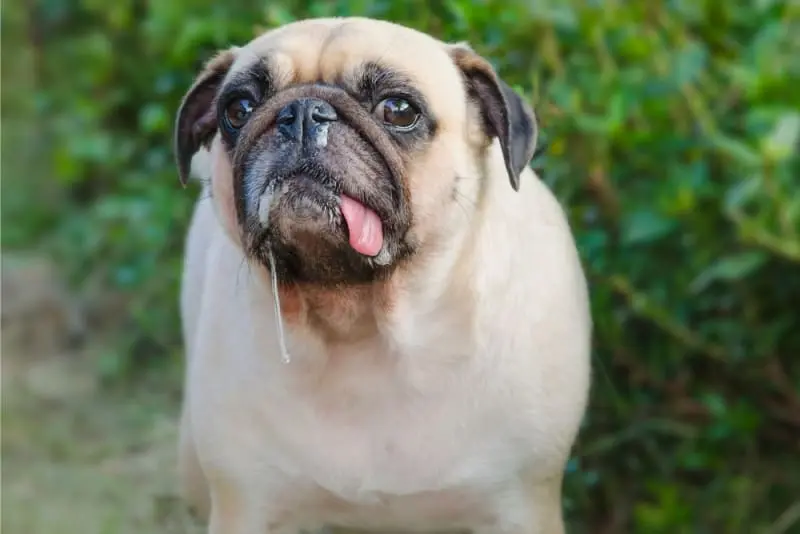Drooling is a common behavior in dogs, and while it can be perfectly normal, it can also indicate an underlying health issue. Understanding the reasons behind your dog’s drooling can help you determine whether it’s something to be concerned about. Let’s explore the potential causes of excessive drooling in dogs and when you should seek veterinary advice.
1. Normal Salivation
- Anticipation of Food: Dogs often drool in anticipation of food, especially if they associate certain sounds or smells with meal times. This is a normal physiological response as they prepare to eat.
- Excitement: Dogs may drool when they’re excited or happy. This could be during playtime, walks, or when greeting their owners.
2. Dental Problems
- Periodontal Disease: Gum disease or dental problems can lead to increased drooling. If your dog has painful teeth or gums, they might drool more than usual.
- Tooth Abscesses: An infection in a tooth can cause excessive drooling, often accompanied by bad breath and swelling in the mouth.
3. Nausea
- Dogs may drool excessively when they feel nauseous or have an upset stomach. This can occur after eating something they shouldn’t have or if they are experiencing motion sickness.
4. Heat and Weather
- Heat: In hot weather, dogs may drool more as they pant to cool down. They might also drool if they’re overheating.
- Humidity: High humidity can cause dogs to drool as their bodies work harder to regulate their temperature.
5. Foreign Objects
- If your dog has something stuck in their mouth, like a stick, bone, or foreign object, they may drool excessively as they try to dislodge it. Look for signs of distress or difficulty eating.
6. Poisoning or Toxins
- Excessive drooling can be a sign of poisoning or exposure to toxic substances. Common household toxins include certain plants, chemicals, or human foods that are harmful to dogs, such as chocolate or grapes.
7. Medical Conditions
- Rabies: While rare, rabies is a serious viral infection that can cause drooling. Other symptoms include behavioral changes and aggression.
- Neurological Issues: Conditions affecting the nervous system may lead to uncontrolled drooling.
- Oral Tumors: Tumors in the mouth can cause discomfort and increased saliva production.
8. Anxiety or Stress
- Dogs may drool when they’re anxious or stressed, similar to how humans might sweat. This could happen during thunderstorms, fireworks, or changes in their environment.
When to Seek Veterinary Attention
While occasional drooling is typically not a cause for concern, you should consult your veterinarian if you notice the following:
- Excessive or sudden drooling: If your dog suddenly starts drooling more than usual, especially if it’s accompanied by other symptoms like vomiting, diarrhea, or lethargy.
- Swelling or discomfort: If your dog shows signs of pain or discomfort when eating or touching their mouth.
- Changes in appetite or behavior: If your dog refuses to eat, shows signs of distress, or displays unusual behavior.
- Signs of poisoning: If you suspect your dog may have ingested something toxic, such as certain plants or human foods.
Conclusion
Drooling can be a normal behavior for dogs, but it can also indicate underlying health issues. Understanding the potential causes of excessive drooling can help you determine whether it’s a cause for concern. Regular dental check-ups, a balanced diet, and attention to your dog’s behavior can go a long way in maintaining their overall health.
Takeaway Tips:
- Monitor Drooling: Keep an eye on your dog's drooling patterns; occasional drooling is usually normal.
- Check Oral Health: Regular dental check-ups can help prevent dental issues that cause excessive drooling.
- Be Aware of Changes: Sudden changes in drooling or behavior warrant a visit to the vet.
- Keep Hazardous Items Away: Ensure that toxic plants and substances are out of your dog’s reach.


